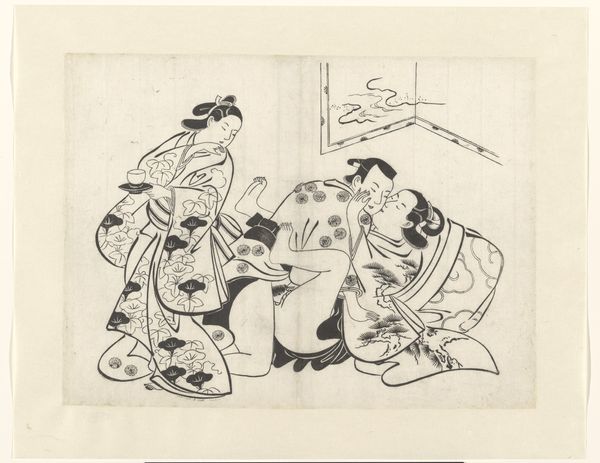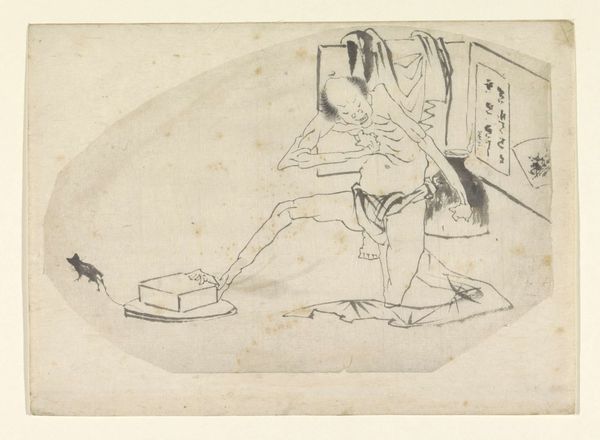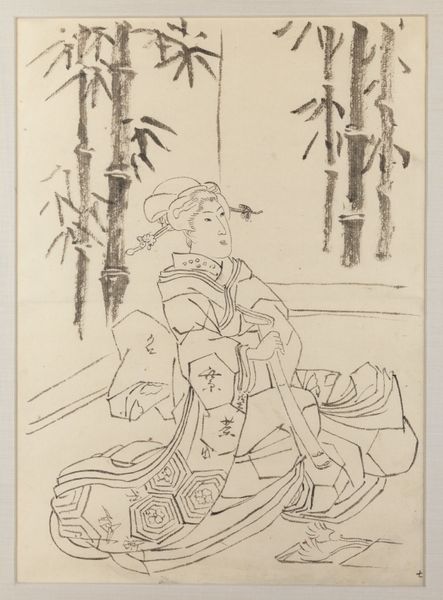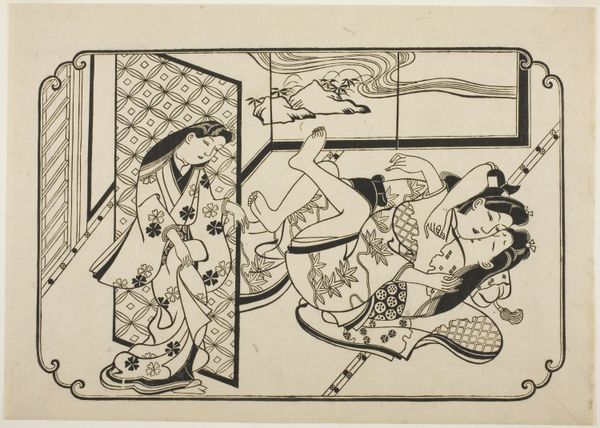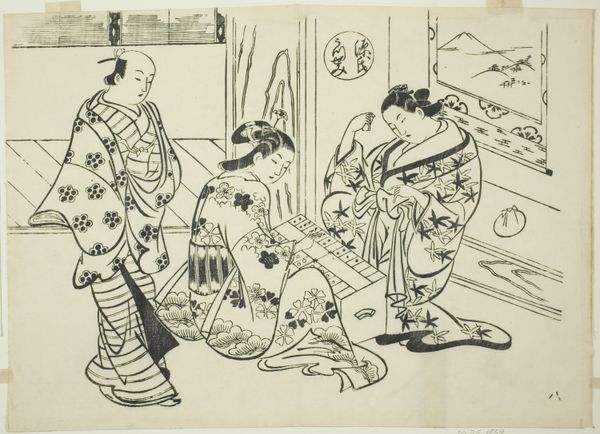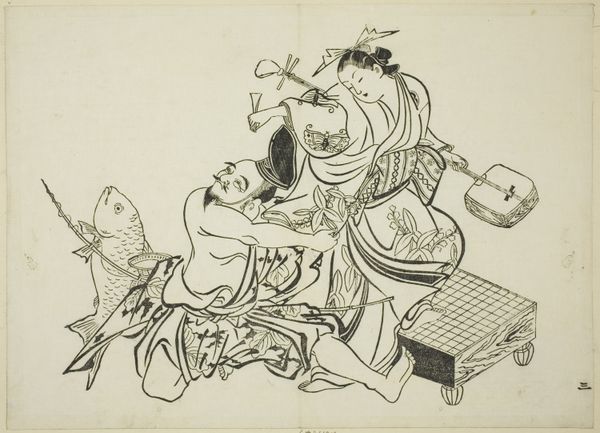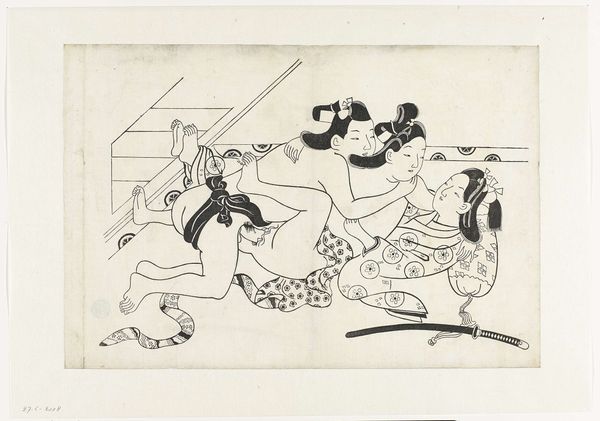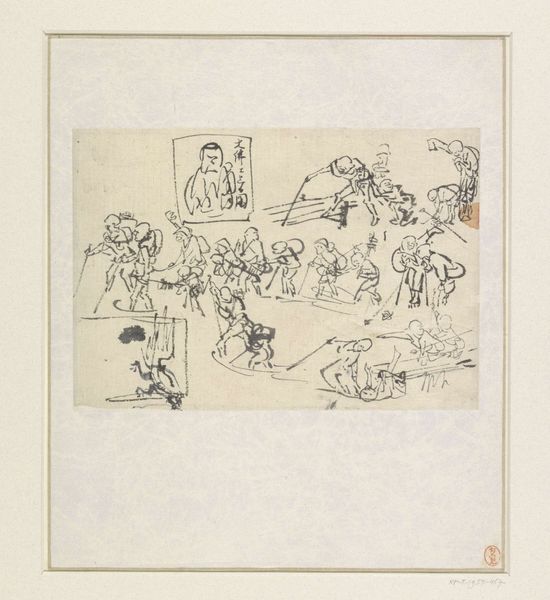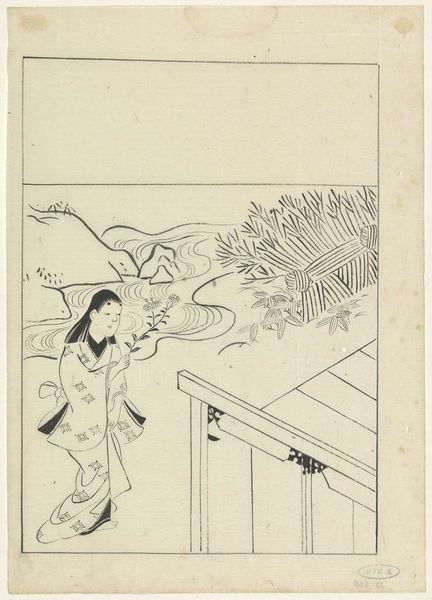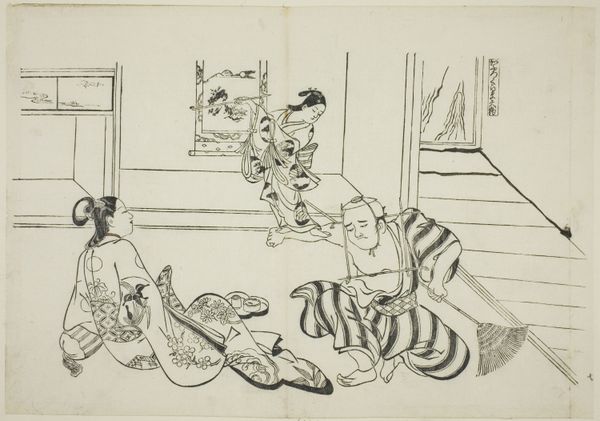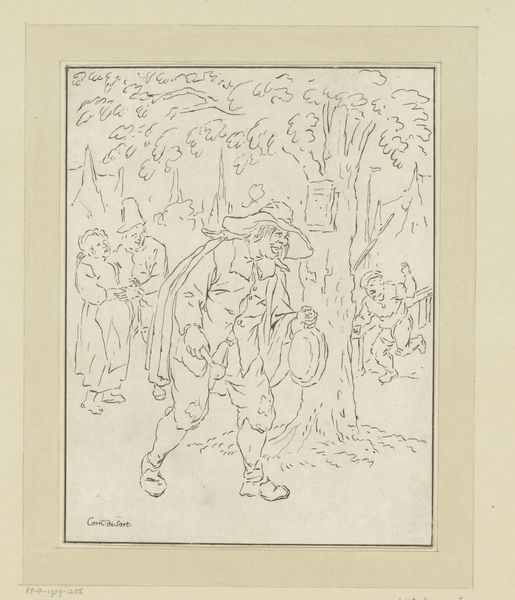
Dimensions: height 363 mm, width 241 mm
Copyright: Rijks Museum: Open Domain
Editor: Here we have Utagawa Yoshiiku's "Man die op het punt staat een vrouw te onthoofden," an ink and pencil drawing from around 1850 to 1900. The scene depicted is intensely unsettling, even in its delicate, sketched form. What’s your reading of this piece, given its graphic nature and historical context? Curator: Indeed. It’s crucial to acknowledge the violence depicted, not to sensationalize, but to analyze how it reflects and potentially critiques the socio-political norms of its time. Utagawa Yoshiiku was working during a period of immense social upheaval in Japan. How do you see this image fitting within the larger discourse of violence against women, class, and power structures of the era, as reflected in Ukiyo-e prints? Editor: I hadn’t considered it quite like that. I was focused on the shock value, but thinking about the power dynamics at play makes a lot of sense. Are you suggesting this work could be interpreted as a commentary on societal oppression? Curator: Precisely! Think about the traditional roles assigned to women, the samurai class's dominance, and how artists might have subtly challenged these hierarchies. This isn't simply a depiction of violence; it is a statement reflecting, perpetuating, or even challenging the established order. Also, how might the rapid modernization of Japan have played into anxieties around gender and tradition? Editor: It's forcing me to consider beyond the initial reaction. It sounds as though you want me to read the situation depicted in this drawing as both something horrific *and* an opportunity to critique those norms. Curator: Precisely, but not just those norms as expressed or relevant *at the time the art was produced*. We must also remember to critique how such depictions reflect how we confront issues like gender, equity, class and agency today. And it challenges us to look critically at similar visual messaging present today, doesn’t it? Editor: It definitely does. I came in seeing a brutal image, and I am leaving with an understanding of how art can invite dialogue around difficult, but necessary issues. Curator: Exactly. By grappling with these complexities, we move beyond simple aesthetics and confront the enduring legacy of power and representation in art and society.
Comments
No comments
Be the first to comment and join the conversation on the ultimate creative platform.
